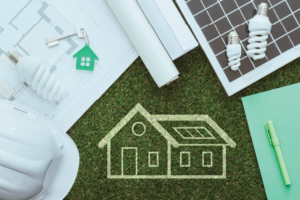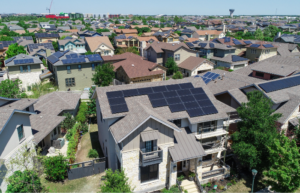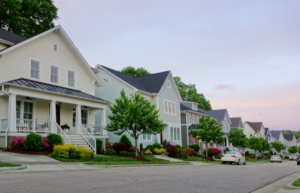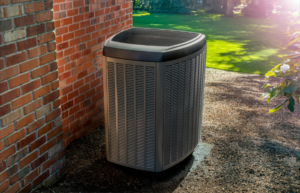Get Rewarded for Residential Energy Efficiency Improvements with Home Energy Rebates
 The North Carolina Clean Energy Technology Center (NCCETC) has released an updated Word to the Wise resource to help residential customers become better informed consumers and successfully navigate the upcoming home energy rebate programs authorized under the landmark Inflation Reduction Act (IRA).
The North Carolina Clean Energy Technology Center (NCCETC) has released an updated Word to the Wise resource to help residential customers become better informed consumers and successfully navigate the upcoming home energy rebate programs authorized under the landmark Inflation Reduction Act (IRA).
Signed into law on August 16, 2022, the IRA includes $391 billion to support clean energy and address climate change across the nation. As part of this funding, the IRA created two Home Energy Rebate programs with an allocated $8.8 billion in funds for the benefit of United States households and home upgrades, to be distributed to households by State Energy Offices and Indian Tribes.
The two Home Energy Rebate programs authorized by the IRA, the Home Efficiency Rebates and Home Electrification and Appliance Rebates, are targeted at helping eligible homeowners take part in home energy efficiency upgrades. Ultimately, these rebates provide direct benefits to Americans by discounting clean energy equipment and home appliances to improve energy efficiency and lower monthly electricity bills.
 The U.S. Department of Energy (DOE) estimates that these rebates have the potential to support over 50,000 U.S. jobs in residential construction, manufacturing, and other sectors and will save households up to $1 billion on energy bills annually. Rebates will only be available after states and territories apply for and receive their funds from the U.S. Department of Energy (DOE). Upon approval of their application, states may launch their program for residents in eligible households.
The U.S. Department of Energy (DOE) estimates that these rebates have the potential to support over 50,000 U.S. jobs in residential construction, manufacturing, and other sectors and will save households up to $1 billion on energy bills annually. Rebates will only be available after states and territories apply for and receive their funds from the U.S. Department of Energy (DOE). Upon approval of their application, states may launch their program for residents in eligible households.
The DOE announced it is now accepting applications for state and territory implementation of the two Home Energy Rebate programs. Applications will be reviewed on a rolling basis and remain open until January 31, 2025. Published guidance and access to funding applications are available for state energy officials in the DOE’s Administrative and Legal Requirements Documents (ALRD) and Home Energy Rebates Program Requirements Document.
The ALRD provides guidance to states and territories to enable them to design their programs to align with local needs and interests while they prepare their workforce and educate residents on home upgrade opportunities to cut energy usage and help consumers save money. Additionally, states and territories are expected to allocate at least half of the program funds to reach households with incomes at or below 80% of their area median income (AMI) to ensure hundreds of thousands of households in need will benefit from free or reduced cost clean energy and energy efficiency upgrades for their homes.
Your Guide to Home Energy Upgrades with the Inflation Reduction Act
 NCCETC’s updated Word to the Wise resource – “Your Guide to Home Energy Upgrades with the Inflation Reduction Act” – now includes additional information about home energy rebates that will be available soon. In this resource, you can find descriptions of each rebate program to help you plan for upgrades and projects once they are made available. NCCETC also published the updated version en español to help as many consumers as possible: Unas Palabras para el Sabio – “Su Guía para Mejorar su Energía en la Casa con la Ley de Reducción de la Inflación.”
NCCETC’s updated Word to the Wise resource – “Your Guide to Home Energy Upgrades with the Inflation Reduction Act” – now includes additional information about home energy rebates that will be available soon. In this resource, you can find descriptions of each rebate program to help you plan for upgrades and projects once they are made available. NCCETC also published the updated version en español to help as many consumers as possible: Unas Palabras para el Sabio – “Su Guía para Mejorar su Energía en la Casa con la Ley de Reducción de la Inflación.”
“The forthcoming rebates give households an extra financial boost to make that much-needed home upgrade or retrofit that they might’ve been putting off,” explained Justin Lindemann, a Policy Analyst at NCCETC.
The Home Efficiency Rebates program offers eligible homeowners, multifamily building owners, and aggregators rebates to make home efficiency upgrades more affordable. These rebates range from $2,000 to $8,000 per household for home energy upgrade projects that are predicted to reduce energy use by at least 20%.
The Home Electrification and Appliance Rebates program was created to make home electrification upgrades more affordable for low-to-moderate income families and households. The DOE reports that around 40% of households in the U.S. are eligible for rebates that can cover up to the full cost of home-improvement for low-income households.
 Single-family households and multifamily buildings are potentially eligible for rebates to reduce the upfront cost of efficient electric technologies such as heat pumps, electric cooking appliances, wiring upgrades, electrical panels, insulation and air sealing, among others.
Single-family households and multifamily buildings are potentially eligible for rebates to reduce the upfront cost of efficient electric technologies such as heat pumps, electric cooking appliances, wiring upgrades, electrical panels, insulation and air sealing, among others.
“In combination with the already available tax credits, and other state and utility incentives, even low-to-moderate income households are given much more of an equal chance to purchase a heat pump or an electric stove — among other energy efficient appliances and upgrades — and reap the benefits of higher efficiency and resiliency, while moving into the 21st century of electrification alongside other income classes,” Lindemann added.
Consumers can visit the Database of State Incentives for Renewables & Efficiency (DSIRE) to learn more about federal, state and utility policies and incentives to assist with paying for energy-saving home improvements or purchases. Maintained and operated by the NCCETC, DSIRE is the most comprehensive source of information on clean energy related policies and incentives in the United States, with summaries of more than 2,600 incentives and policies.